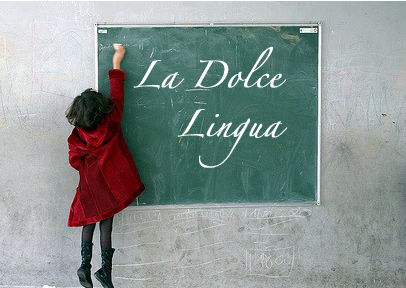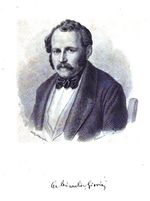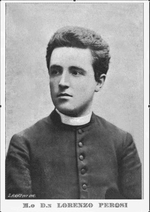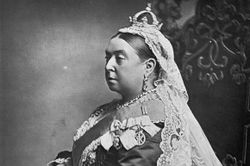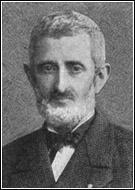Difference between revisions of "Category:Italian language--1850s"
| Line 52: | Line 52: | ||
* [[Elia Benamozegh]] (1823-1900) | * [[Elia Benamozegh]] (1823-1900) | ||
* [[Pietro Manfrin]] (1827-1909) | * [[Pietro Manfrin]] (1827-1909) | ||
* [[Antonio Maria Ceriani]] (1828-1907) | |||
* [[David Castelli]] (1836-1901) | * [[David Castelli]] (1836-1901) | ||
* [[Giovanni Bovio]] (1837-1903) | * [[Giovanni Bovio]] (1837-1903) | ||
Revision as of 07:19, 31 December 2019
History of Research (1850s) -- Notes
In 1853 Aurelio Bianchi-Giovini introduced to Italy the critical study of the Gospels, but it was not until after the Italian unification that an authentic free debate could start. In 1863 both the works of Strauss and Renan were translated into Italian. The latter took central stage, producing a flow of apologetic works. With them also came the realization that the Catholic Church had lost the complete control they had on Italy's cultural life, so much so that even the life of Jesus could be now be more freely subjected to critical analysis and non-conformist approaches, like the socialist Christ portrayed by Giovanni Bovio. Catholic scholars, like Giovanni Battista de Rossi, also adopted a more critical approach. Following the leadership of Samuel David Luzzatto Italian-Jewish scholarship flourished with Giuseppe Rafaele Levi and Elia Benamozegh, and obtained his greatest achievement abroad with the foundation in 1886 of the Jewish Theological Seminary by rav Sabato Morais from Livorno.
In the 1890s Lorenzo Perosi revived the great traditions of Italian oratorios with a series of highly successful works centered on the life of Jesus.
Pages in category "Italian language--1850s"
The following 67 pages are in this category, out of 67 total.
1
- Giuditta (Judith / 1852 Pacini / Abate), oratorio
- Critica degli Evangeli (1853 Bianchi-Giovini), book)
- Matatia (Matthatias / 1853 Liberali / Vicoli), oratorio
- Il Nuovo Testamento (The New Testament / 1854 Achilli), book
- Giuditta (Judith / 1854 Cianchi / @1840 Peruzzini), opera (music), Florence premiere
- Giovanni Giscala (John of Giscala / 1855 Rossi / Cavagnari), opera (music & libretto), Parma premiere
- Spartaco (1857 Carcano), play
- Paolo (1857 Gazzoletti), play
- Giuditta (1857 Giacometti), play
- L'ultimo giorno di Gerusalemme (1858 Lucchesi), opera
- La distruzione di Gerusalemme (The Destruction of Jerusalem / 1858 Pacini / Fioretti), oratorio (music & libretto), Florence premiere (cast)
- Jone; ossia, L'ultimo giorno di Pompei (Jone; or, The Last Day of Pompeii / 1858 Petrella / Peruzzini), opera (music & libretto), Milan premiere (cast)
- Giuda Maccabeo (1859 Mariotti / Meini), oratorio
- Giuditta (Judith / 1860 Peri / Marcello), opera
- Brief Summary of Material and Chronological Facts, to Connect the Old with the New Testament (1862 Perceval), non-fiction
- Ester (1862 Soldi / Metti), oratorio
- Vita di Gesù (1863 Renan / De Boni), book (Italian ed.)
- Spartacus overture (1863 Saint-Saëns), music
- La vita di Gesù; o, Esame critico della sua storia = Das Leben Jesu: kritisch bearbeitet (The Life of Jesus: Critically Examined / 1863 @1835 Strauss), book (Italian ed.)
- Errori di Renan nella vita di Gesù (1864 Capecelatro), non-fiction
- (++) La Roma sotterranea cristiana (1864-77 Rossi), book
- Matatia vincitore (Matthatias Triumphant / 1865 Coppola), oratorio
- Vita, viaggi e predicazione dell'apostolo S. Paolo (Life, Travel and Preaching of the Apostle Paul / 1866-68 Ambrosi), book
- Il libro del Cohelet volgarmente detto Ecclesiaste (Qoheleth / 1866 Castelli), book
- La vita di Gesù Cristo (1868 Capecelatro), non-fiction
- Della vita di Gesù Cristo (1869-93 Fornari), non-fiction
- Le memorie di Giuda (1870 Petruccelli della Gattina), novel (Italian ed.)
- Storia degli ebrei dall'edificazione del secondo tempio fino ai giorni nostri (1870 Schwab / Pugliese), book (Italian ed.)
- Nerone (Nero / 1872 Cossa), play
- Spartaco (1873 Giovagnoli), novel
- Il Vangelo spiegato, difeso, meditato = L'Évangile expliqué, défendu, médité (The Gospel Explained, Defended, Meditated / 1876-77 @1864-66 Dehaut / Villoresi), book (Italian ed.)
- Gesù Cristo: studi storici (Jesus Christ: Historical Studies / 1878 Arosio), book
- Volgarizzamento della Istoria delle guerre giudaiche di Josefo Ebreo (1878-1879 Calori), book
- Vita di san Paolo apostolo (Life of the Apostle Paul / 1879 Murena), book
- Il figliuol prodigo (The Prodigal Son / 1880 Ponchielli), opera
- Maria di Magdala (1882 Calvi), play
- L'introduzione del Vangelo secondo Giovanni commentata (1882 Rosmini), book
- Pilato: saggio istorico (Pilate: Historical Essay / 1883 Maddaloni), non-fiction
- Sopra Filone Alessandrino e il suo libro detto La sapienza di Salomone (1883 Perez), book
- L'Evangelo; ossia, Vita di Gesù Cristo narrata dai quattro evangelisti (The Gospel; or, The Life of Jesus Christ Narrated by the Four Evangelists / 1884 Arosio), book
- Erodiade, Italian ed. (Herodias / 1884 Gialdini / @1881 Massenet), Paris production (opera)
- Erodiade, Italian ed. (Herodias / 1886 Mascheroni / @1881 Massenet), Bologna production (opera)
- Spartaco (Spartacus / 1886 Sinico / Palermi), opera
- Cristo alla festa di Purim (Christ at the Feast of Purim / 1887 Bovio), play (Italian)
- Gli Ebrei sotto la dominazione romana (1888-1897 Manfrin), book
- Vita di Gesù (Life of Jesus / 1890 Bonghi), non-fiction
- Gesù Cristo e i suoi recenti biografi (1891-92 Chiappelli), essay
- Spartaco (Spartacus / 1891 Platania / Ghislanzoni), opera
- San Paolo e le sue quattordici lettere (St. Paul and His Fourteen Letters / 1892 Arosio), book
- La mente di San Paolo (The Mind of St. Paul / 1893 Arosio), book
- L'Evangelio di S. Giovanni ed il commento di Antonio Rosmini: saggio esegetico (1894 Labanca), book
- Le memorie degli apostoli Pietro e Paolo in Roma (1894 Marucchi), book
- San Paolo (1895 Bovio), play
- Ben-Hur; ossia, I giorni del messia = Ben-Hur: A Tale of the Christ (1895 @1880 Wallace / Galea), novel (Italian ed.)
- Storia del popolo d'Israele = Geschichte des Volkes Israel (History of the People of Israel / 1896-97 @1887 Stade, Holtzmann / Valbusa), book (Italian ed.)
- La passione di Cristo secondo S. Marco (1897 Perosi), oratorio
- La risurrezione di Cristo (1898 Perosi), oratorio
- La risurrezione di Lazzaro (1898 Perosi), oratorio
- La trasfigurazione di N.S. Gesù Cristo (1898 Perosi), oratorio
- I miracoli di Gesù Cristo (The Miracles of Jesus Christ / 1899 Arosio), book
- La passione di Cristo (The Passion of Christ / 1899 Calcina), short film
- Il natale del Redentore (1899 Perosi), oratorio
Media in category "Italian language--1850s"
The following 3 files are in this category, out of 3 total.
- 1861 Levi.jpg 768 × 1,000; 98 KB
- 1865 Benamozegh.jpg 184 × 274; 11 KB
- 1893 Castiglioni.jpg 650 × 800; 88 KB
